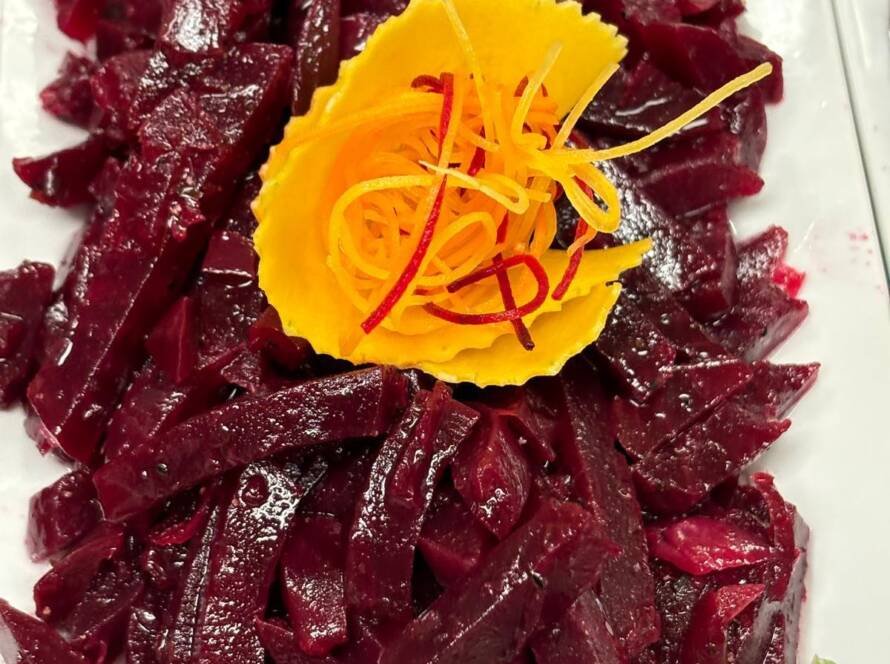A gala’s success isn’t just measured by its décor or the list of attendees—it’s remembered through how it felt. The laughter, the atmosphere, the rhythm of conversation, and, most importantly, the food. A thoughtfully crafted gala catering service can make the difference between a pleasant evening and one that becomes the talk of the season.
Great food doesn’t simply fill plates—it fills moments with meaning. It creates anticipation, sparks conversations, and leaves guests with impressions that last far beyond the evening. The culinary experience is the quiet conductor of the event, dictating mood, pace, and connection among everyone present.
The Power of Food in Setting the Tone
Every gala tells a story, and food is one of its most expressive storytellers. The first bite of a hors d’oeuvre or the aroma wafting from the dining area sets expectations. When food aligns seamlessly with the event’s theme, tone, and audience, it reinforces sophistication and purpose.
Why Food Defines the Mood?
- Aromas trigger emotion and anticipation even before the meal begins.
- Textures create variety and engagement, stimulating curiosity.
- Colors enhance the aesthetic of the event, complementing the décor.
- Flavors anchor the sensory memory of the evening.
The culinary design subtly communicates whether the gala feels intimate, luxurious, formal, or festive. It creates rhythm and energy—inviting guests to relax, enjoy, and connect.
From Satisfying Hunger to Creating Experience
At a great gala, food isn’t just about nourishment; it’s part of the event’s identity. Every element—from the menu concept to the plating—shapes perception. A great menu captures the essence of the host’s vision while making each guest feel personally considered.
A gala that serves food as an experience rather than an obligation creates emotional value. Guests feel appreciated, and that sentiment enhances how they perceive the entire evening.
How Food Transcends Function?
- It builds anticipation: The sequence of courses and timing of service shape suspense.
- It unites people: Shared flavors and conversations foster social warmth.
- It represents the host’s character: A refined menu mirrors thoughtfulness and attention to detail.
- It enhances storytelling: Food can reinforce the event’s cause, theme, or cultural tone.
Great catering makes guests feel like participants, not just attendees.
Why Gala Catering Is an Art of Connection?
Every great event thrives on connection—between guests, between the event’s purpose and its audience, and between expectation and fulfillment. Food is the bridge that connects all three.
A gala catering service blends culinary creativity with event psychology. It considers how people move, mingle, and engage. Whether it’s an elegant plated dinner or a dynamic series of live food stations, the style of service shapes how guests interact.
Styles That Influence Interaction
- Seated Fine Dining: Encourages conversation within smaller groups, ideal for formality.
- Buffet or Stations: Promotes movement and spontaneous networking.
- Canapé Receptions: Keep energy fluid and informal, perfect for pre-event mingling.
- Hybrid Layouts: Combine sit-down dining with open interaction spaces.
When service design matches guest energy, the event feels natural, not orchestrated.
The Emotion Behind Every Bite
Great food elicits emotion. It can spark nostalgia, curiosity, or sheer joy. The right dish at the right moment can make guests pause, smile, and connect over shared pleasure.
A gala menu should flow like a narrative. It starts with intrigue, builds with richness, and ends with satisfaction. Each flavor progression subtly aligns with the emotional pace of the evening.
Crafting Emotion Through Culinary Flow
- Opening Notes: Light appetizers awaken curiosity.
- Main Crescendo: Entrées deliver comfort and depth.
- Closing Harmony: Desserts offer a sweet resolution.
- Beverage Pairing: Completes the emotional rhythm of dining.
When food tells a story, guests remember the event not as a series of moments, but as a shared emotional journey.
The Role of Presentation
Visual appeal is the first taste. The artistry of plating transforms a simple meal into an elegant statement. The textures, colors, and arrangement on each plate define how guests perceive the dish before they even take a bite.
Presentation also reflects the event’s brand of sophistication. A minimalist plate with clean lines communicates refinement, while vibrant compositions express creativity and warmth.
Presentation Principles That Elevate Galas
- Balance: Visual harmony between ingredients.
- Contrast: Using colors and textures to enhance visual depth.
- Precision: Every detail matters, from garnish placement to portion size.
- Cohesion: Plates must complement the event’s overall design theme.
A visually stunning plate doesn’t just impress—it engages. It invites appreciation before it satisfies appetite.
Service as Performance
A great meal can lose its magic if service falters. The grace, timing, and professionalism of staff turn the act of serving into performance art. Each movement contributes to the evening’s ambiance.
Well-trained servers maintain a quiet rhythm—anticipating guest needs without intrusion. They carry the atmosphere as much as the food itself.
Key Elements of Flawless Service
- Timing: Each course must arrive with the right pacing.
- Awareness: Servers must read the room and adjust discreetly.
- Consistency: Every guest receives equal attention and experience.
- Coordination: Service aligns with speeches, music, and entertainment seamlessly.
Exceptional service isn’t noticed—it’s felt. Guests leave with a sense that everything just flowed perfectly.
Food as a Symbol of Appreciation
Every gala, regardless of purpose, is an act of appreciation—of donors, employees, partners, or art patrons. Food is the most immediate and personal way to express that gratitude.
The care placed in menu selection and execution communicates value far more deeply than words. When guests feel indulged, they feel seen.
A gala catering service that emphasizes thoughtfulness in both design and delivery tells guests, “You matter.” That sentiment transforms a pleasant evening into a heartfelt one.
The Science of Memory and Food
Neuroscience confirms that sensory experiences—taste, smell, and sight—are powerful triggers for memory. That’s why people recall great food long after an event ends.
A single dish can become symbolic of the evening’s emotion: the warmth of conversation, the sparkle of laughter, the atmosphere of belonging. Great food attaches emotion to experience, anchoring the event in memory.
The Influence of Menu Design
Menu design is a strategy disguised as creativity. It’s where culinary artistry meets event psychology.
A well-constructed menu caters not just to taste but to energy levels, dietary inclusivity, and pacing. Every element should serve a purpose—keeping guests engaged, comfortable, and satisfied throughout the evening.
Menu Design Essentials
- Diversity: Offer a range of flavors and cuisines without overcomplication.
- Flow: Transition naturally from light to rich, crisp to smooth.
- Inclusivity: Accommodate all dietary needs gracefully.
- Seasonality: Use ingredients that reflect freshness and context.
- Purpose: Align food with the event’s theme or message.
The menu acts as the invisible script of the evening, guiding guests through moments of connection and delight.
The Sound and Scent of Dining
Two often-overlooked dimensions of gala catering are sound and scent. The gentle clink of glassware, the soft rhythm of serving trays, and the aroma drifting across the room all shape the guest experience subconsciously.
How Sensory Layers Shape the Evening?
- Aroma: Invites guests into the experience and signals transitions.
- Sound: Should blend naturally with music and conversation.
- Texture: Engages both mouthfeel and emotional response.
The sensory symphony created by these elements transforms eating into immersion.
Food and Conversation: A Natural Pairing
Conversation flows more easily when the food is exceptional. When guests share an experience they genuinely enjoy, dialogue follows naturally. Food becomes a social anchor—something to talk about, react to, and connect over.
Great gala meals often prompt shared curiosity: “What’s in this sauce?” or “That dessert was extraordinary.” These exchanges spark rapport and create warmth across the room.
The Role of Innovation
Innovation in gala catering is not about novelty for its own sake—it’s about surprising guests with creativity that enhances the experience. A touch of the unexpected, like edible florals or interactive plating, keeps guests intrigued.
But innovation must serve emotion, not ego. The goal is delight, not distraction. Subtle inventiveness makes an event feel fresh and forward-thinking without losing elegance.
Examples of Thoughtful Innovation
- Interactive dessert bars or tasting menus
- Themed cocktails that reflect event branding
- Sustainable menus showcasing local artistry
- Minimal-waste presentations that feel responsible and refined
Innovation works best when it feels effortless and integrated into the event’s story.
Sustainability and Conscious Catering
Luxury is evolving. Guests now associate sophistication with responsibility. Sustainable gala catering shows that elegance and ethics can coexist beautifully.
Whether it’s using locally sourced ingredients, compostable service materials, or minimizing food waste, responsible practices elevate perception. Guests value events that reflect social awareness as much as they value style.
This balance between indulgence and integrity sets the tone for modern celebrations—refined, responsible, and relevant.
Challenges That Define Greatness
Executing a large-scale gala meal isn’t without obstacles. Timing, temperature, coordination, and consistency must be flawlessly balanced. What distinguishes a good gala from a great one is how smoothly these invisible challenges are managed.
Behind-the-Scenes Precision
- Preparation Synchrony: All stations must align for perfect service flow.
- Quality Control: Dishes must maintain texture and temperature at scale.
- Dietary Sensitivity: Every guest’s needs must be anticipated.
- Aesthetic Continuity: Each plate must reflect the same standard.
Guests rarely see these complexities—but they feel the results when execution is impeccable.
Collaboration: The True Ingredient of Success
Gala catering thrives on collaboration. Chefs, event planners, decorators, and service teams must operate as one. Their synchronization determines not just logistics but the emotional tempo of the evening.
When kitchen precision meets floor coordination, everything feels seamless. Guests sense the harmony even if they can’t define it.
The Enduring Impression of Flavor
As the music fades and guests take their final sips, it’s the taste that lingers—the crispness of the appetizer, the warmth of the entrée, the sweetness of the farewell dessert. These final impressions define how the event will be remembered.
Great food becomes the signature of a great gala. It turns fleeting hours into cherished memories.
Why Great Food Is the Event’s Heartbeat?
Decor sets the stage. Music provides rhythm. But food? Food gives life.
It brings people together, tells stories, and symbolizes gratitude. It transforms formality into familiarity and turns an event into an experience.
A gala catering service that balances creativity, comfort, and care doesn’t just feed guests—it moves them. It ensures that every moment feels personal, purposeful, and perfect.
When food touches emotion, a good gala becomes a great one—not because of extravagance, but because every guest leaves feeling that something extraordinary happened around that table.




